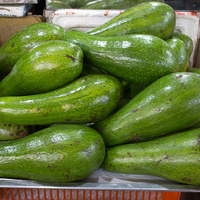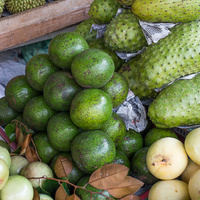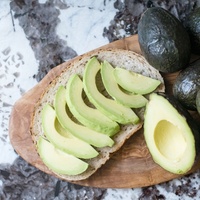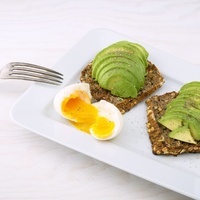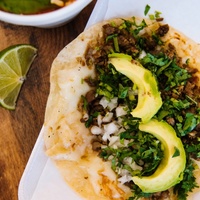Common name: Avocado
Other common names: Avocado Pear, Alligator Pear, Butter Pear, Pear, West Indian Avocado
Description
Originating from Central America, the Avocado tree has a natural range extending from Mexico, through Guatemala, to Nicaragua. Nowadays, it is cultivated worldwide for its fruit, eaten mostly as a salad vegetable.
There are numerous varieties of avocado, all of which derive from three main types, referred to as the Mexican, Guatemalan and West Indian. The Guatemalan and West Indian types bear large round, oval or pear-shaped fruit, distinct from the Mexican type, which bears smaller, mostly pear-shaped fruit.
The three types also differ in their climate requirements. The West Indian type grows best in tropical lowland areas, and the Mexican and Guatemalan best in tropical highland, subtropical and warm-temperate areas.
Wild trees may reach heights up to 20 m (65 ft). However, they are typically 5 to 15 m (16 to 50 ft) tall in cultivation, with a short, stout trunk supporting a wide-spreading umbrella-shaped crown. The bark is grey or brown, slightly rough and fissured.
Leaves are elongated oval with tapered ends, 10 to 20 cm (4 to 8 in) long, dark glossy green and prominently veined on top, underneath dull grey-green. They are alternately arranged along the ends of the branches and remain on the tree in all seasons.
Flowers are small, greenish-yellow and in much-branched clusters at the branches' ends. They bloom from winter through to autumn, with the timing varying considerably amongst the different types and varieties. Some come into flower very early in the season, and others quite late.
Fertilised flowers develop into pear-shaped, oval or round fruit, with smooth or warty, green or dark purple skin and weigh from a few grams up to 3 kg (7 lbs), depending on the type and variety. They ripen six to fourteen months after fruit set, depending on the climate, and again the type and variety, becoming soft to the touch, with thin leathery skin enclosing buttery yellow pulp and a large round, brown seed.
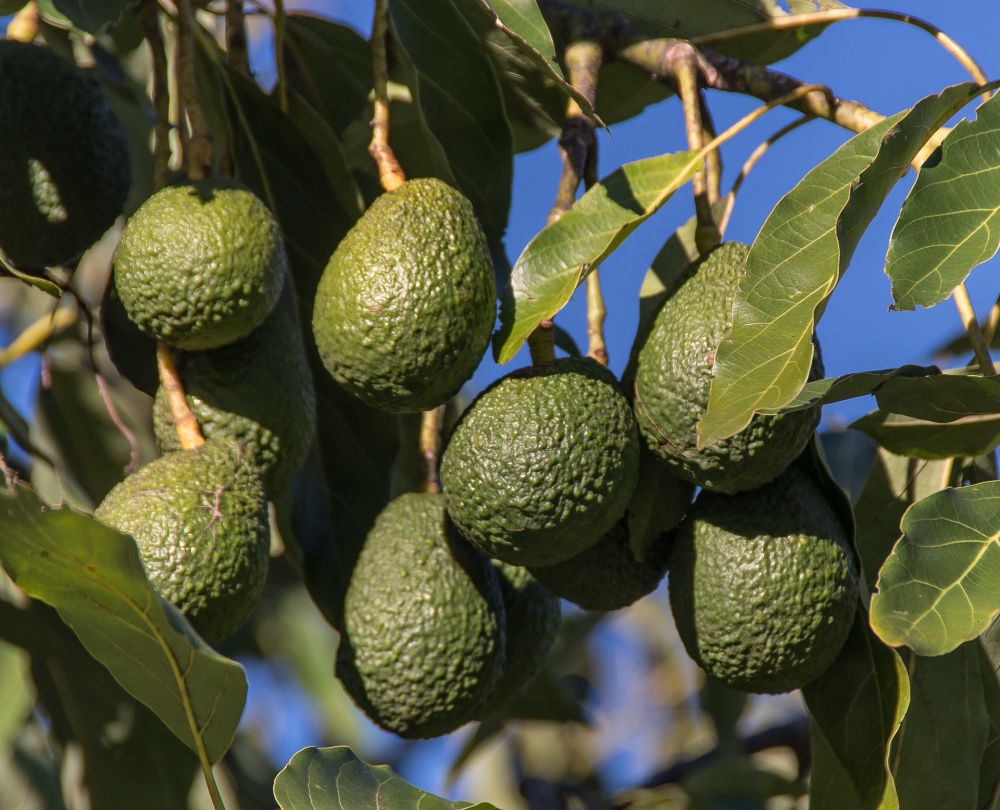
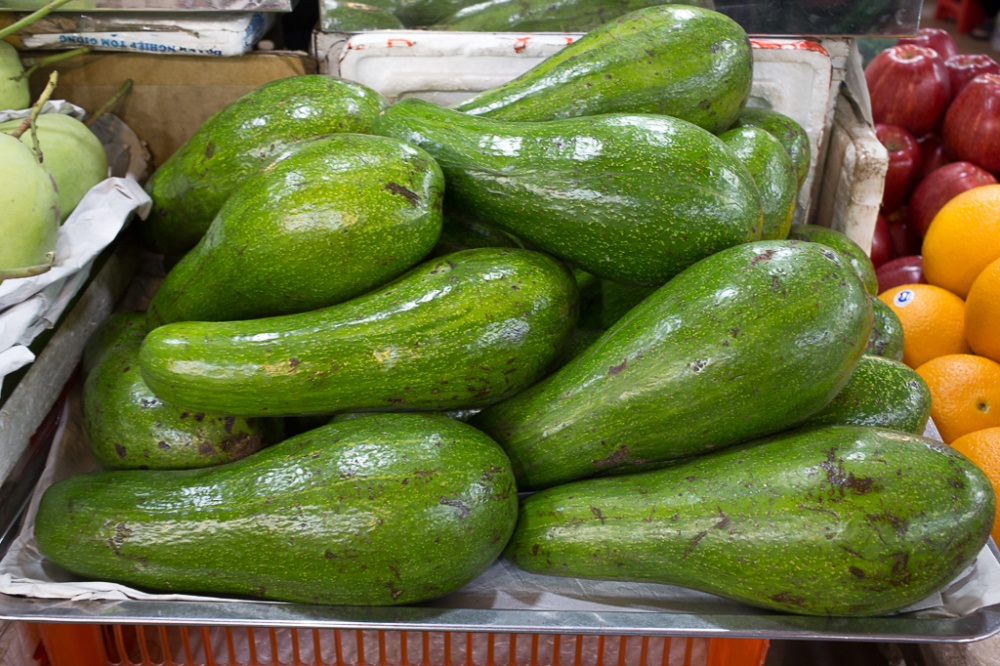
Use
The soft, ripe and oily pulp is prepared and consumed in numerous ways in different countries. In Mexico, it is crushed and mixed with spices and lime juice to make Guacamole, a dish now popular outside of Mexico, including in the United States. In other regions of North America, Europe, Australia and New Zealand, it is mainly used in salads, spread on toast or eaten in sandwiches. In the Caribbean, it is also commonly eaten as a cooling accompaniment to soups. And in Brazil, it is blended with milk and ice cream to make smoothies.
Fruit rejected by the fresh fruit trade, usually over-ripe, blemished, malformed, misshapen or of the wrong size, can be pressed into an edible, pale yellow oil. It is generally extracted from the pulp without heat using a cold-press method. Its taste is subtle, with a delicate, buttery mouthfeel and without the spicy notes of most cold-pressed salad oils. Yields are from 10 to 30% of oil by weight, depending on the type (Mexican, Guatemalan or West Indian), growing conditions and fruit ripeness.
Avocado oil has one of the highest smoke points of any cooking oil, at about 270°C (518°F), making it suitable for deep-frying. By comparison, refined Safflower oil (from Carthamus tinctorius) has a smoke point of 266°C (510°F), Coconut oil (from Cocos nucifera) around 232°C (450°F), and Olive oil (from Olea europaea) only 210°C (410°F). Avocado oil is also sourced for use in cosmetics and is reputed to have beneficial effects on the skin when applied.
Until recently, the seeds were considered waste and discarded. But now, a company in Mexico (Biofase) is converting them into a resin that can be heated and moulded to create plastic-like sheets. The sheets are then die-cut into disposable, bio-degradable food-grade utensils such as knives, forks, spoons, drinking straws and lids for coffee cups.
The flowers secrete abundant nectar under favourable conditions. It is reported as a major honey plant in the Dominican Republic, El Salvador, Haiti, Martinique, Mexico and Mozambique. Avocado honey is dark amber, somewhat resembling cane syrup, thick, strong-flavoured, with a hint of molasses and caramelised sugar, and is slow to granulate.
The wood is light- to medium-weight, averaging around 640 kgs per cubic meter (40 lbs per cubic ft), and has low natural resistance to rot and decay. It has no particular uses or commercial value, and the tree is not normally felled for its wood in areas where the fruit is eaten and has economic importance. After pruning, the branch wood can be dried and used for firewood.
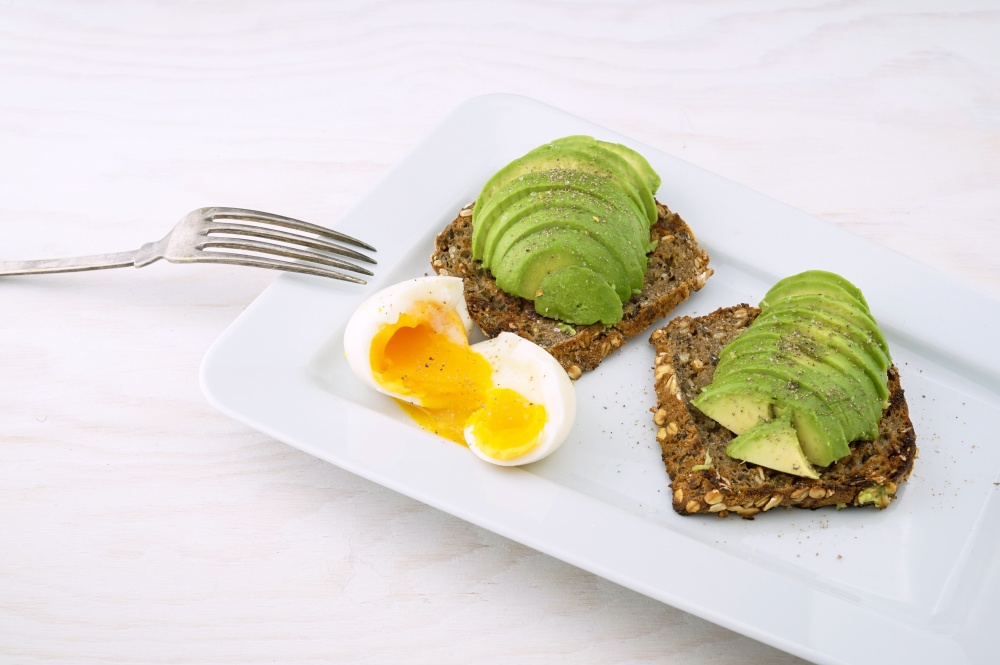
Health and nutrition
The oil-rich pulp is a good source of energy. It contains high levels of essential vitamins, particularly the water-soluble vitamins B (Folate) and C, and fat-soluble vitamins A, E and K. Because fat-soluble vitamins are absorbed through the skin, the oil is used widely in skin creams and cosmetics. Avocado oil also contains good levels of Potassium and Phosphorus. It is also high in Oleic acid, an Omega-9 fatty acid that helps maintain healthy blood cholesterol levels.
The ancient Mayans used the oil to treat burns and as a pomade (an oil or ointment used to dress the hair).
The seed contain 1 to 2% of a brownish oil extracted by cold-pressing and is used topically for treating dry skin and skin blemishes.
General interest
In Jamaica, river mullets are caught on small hooks baited with pieces of semi-ripe avocado.
Climate
Avocado trees grow naturally and produce good quality fruit in humid warm-temperate, subtropical and tropical climates, generally frost-free areas with annual lows of 7 to 25°C, annual highs of 17 to 35°C, annual rainfall of 600 to 4000 mm and a summer or winter dry season of 4 months or less, extending to 12 months with irrigation or groundwater.
In its native Central America, trees of the West Indian type occur at elevations from near sea level up to 750 m (2460 ft), where the average low of the warmest month is 19°C (66°F) or higher. This suggests varieties of this type are unlikely to thrive at elevations above, for example, 350 m (1150 ft) in Hawaii, 730 m (2395 ft) in Jamaica or 960 m (3150 ft) in Colombia, because of too-cool temperatures.
In contrast, Guatemalan and Mexican types occur in Central America at elevations from 900 m to 2500 m (2950 to 8200 ft), where the average low of the warmest month ranges from 10 to 18°C (50 to 64°F), making them more cold tolerant than the West Indian type. As such, they are the best choice for cultivating in cool-climate regions such as California, Spain, Israel, South Africa, southern Australia and high-elevation areas in the tropics. However, the trees can take 5 or 6 years to flower and bear fruit in cool climate regions.
Some of the best-suited varieties for locations with occasional minor frosts include 'Bacon', 'Fuerte', 'Hass', 'Holiday', 'Mexicola', 'Oro Negro', 'Rincon', 'Ryan', 'Sharwill', 'Stewart', 'Reed' and 'Zutano'. And the hardiest of these are 'Fuerte', 'Mexicola' and 'Zutano'.
Growing
New plants can be grown from seed, but seedling plants do not come true-to-type, so vegetative propagation is preferred when seeking predictable results, such as high yields and fruit quality.
The best results have been grafting cuttings of select varieties onto ordinary seedling rootstock. This propagation technique also facilitates extending the harvest season to be had through grafting different varieties onto the same tree or different rootstock in the same orchard. For example, cultivating grafted 'Pollock', 'Waldin', 'Booth 7' and 'Choquette' varieties will extend the harvest season by months over cultivating a single variety. 'Pollock' being the earliest to bear fruit and 'Choquette' being the last to do so.
Avocado trees perform best on free-draining loam, sandy-loam and loamy-sand soils of a slightly acid to moderately alkaline nature, generally with a pH of 6.2 to 8.0, and on sites with full to partial sun exposure. The trees have poor tolerance to slow-draining, clayey or permanently wet soil or to pronounced and prolonged drought conditions.
Five-year-old Guatemalan type Avocado trees in well-managed orchards in Australia yield around 80 kg (176 lbs) of fruit per tree per season. In comparison, fifteen-year-old trees yield around 250 kgs (550 lbs). Yields of seedling West Indian Avocados vary greatly. Still, up to 22,000 kg per hectare (19,630 lbs per acre) is possible in mature, well-managed orchards.
Problem features
The leaves are reportedly toxic to ruminant animals such as cows, sheep and goats.
Where it grows
References
Books
-
Adams, C. D. 1972, Flowering plants of Jamaica, University of the West Indies, Mona, Greater Kingston
-
Axtell, B. L & Fairman, R. M 1992, Minor oil crops, Food and Agriculture Organization of the United Nations (FAO), Rome
-
Barwick, M., et al. 2004, Tropical & subtropical trees : a worldwide encyclopaedic guide, Thames and Hudson, London
-
Bradbear, N. 2009, Bees and their role in forest livelihoods : a guide to the services provided by bees and the sustainable harvesting, processing and marketing of their products, Food and Agriculture Organization of the United Nations (FAO), Rome
-
Brady, G. S. & Clauser, H. R & Vaccari, J. A. 2002, Materials handbook : an encyclopedia for managers, technical professionals, purchasing and production managers, technicians and supervisors, 15th ed., McGraw-Hill, New York
-
Chevallier, A. 2000, Encyclopedia of herbal medicine, 2nd American ed., Dorling Kindersley, New York
-
Crane, E., Walker, P. & Day, R. 1984, Directory of important world honey sources, International Bee Research Association, London
-
Editors of Sunset Magazine 2012, The New Western Garden Book: The Ultimate Gardening Guide, 9th edition, Sunset Publishing Corporation, California
-
Francis, J. K. and Liogier, H. A. 1991, Naturalized exotic tree species in Puerto Rico, General technical report SO-82, USDA Forest Service, Southern Forest Experiment Station, New Orleans
-
Gilman, E. F. 1997, Trees for urban and suburban landscapes, Delmar Publishers, Albany, New York
-
Gunstone, F. D. 2011, Vegetable oils in food technology : composition, properties and uses, 2nd ed, Wiley-Blackwell, Hoboken, New Jersey
-
Jamieson, G. S. 1943, Vegetable fats and oils : their chemistry, production, and utilization for edible, medicinal and technical purposes, 2d ed, Reinhold, New York
-
Janick, J., & Paull, R. E. 2008, The encyclopedia of fruit & nuts, CABI Publishing, Wallingford, Oxfordshire
-
Jensen, M. 1999, Trees commonly cultivated in Southeast Asia : an illustrated field guide, 2nd ed., Food and Agricultural Organisation of the United Nations (FAO) Regional Office for Asia and the Pacific (RAP), Bangkok
-
Khan, I. A. & Abourashed, E. A. 2010, Leung's encyclopedia of common natural ingredients : used in food, drugs and cosmetics, 3rd edition, Wiley Publishing, Hoboken, New Jersey
-
Little, E. L. & Skolmen, R. G. 1989, Common forest trees of Hawaii (native and introduced), Agricultuural Handbook No. 679, Forest Service, U.S. Department of Agriculture, Washington, D.C.
-
Little, E. L. et al. 1964 and 1974, Common trees of Puerto Rico and the Virgin Islands (2 volumes), Forest Service, U.S. Department of Agriculture (USDA), Washington D.C.
-
Martin, F. M., et al. 1987, Perennial edible fruits of the tropics : an inventory, U.S. Dept. of Agriculture (USDA), Agricultural Research Service, U.S. Government Printing Office (GPO), Washington, D.C.
-
Morton, J. F. & Dowling, C. F. 1987, Fruits of warm climates, Creative Resources Systems, Winterville, North Carolina
-
Norrington, L. & Campbell, C. 2001, Tropical food gardens : a guide to growing fruit, herbs and vegetables in tropical and sub-tropical climates, Bloomings Books, Hawthorn, Victoria
-
Page, P. E. 1984, Tropical tree fruits for Australia, Queensland Department of Primary Industries (QLD DPI), Brisbane
-
Perkins, K. D. & Payne, W. 1981, Guide to the poisonous and irritant plants of Florida, Florida Cooperative Extension Service, Gainesville, Florida
-
Queensland Department of Primary Industries and Fisheries (QLD DPI) 2008, Queensland tropical fruit : the healthy flavours of North Queensland, Brisbane
-
Record, S. J. & Hess, R. W., 1972, Timbers of the New World, Yale University Press, New Haven, Connecticut & Arno Press, New York
-
Standley P. C., & Steyermark J. A. 1946 to 1976, Flora of Guatemala (25 volumes), Botany series publication (Chicago Field Museum of Natural History), Chicago, Illinois
-
Tacon, A. G. & Hasan, M. R. 2009, Feed ingredients and fertilizers for farmed aquatic animals : sources and composition, Food and Agriculture Organization of the United Nations (FAO), Rome
-
Van Wyk, B. E. 2005, Food plants of the world: an illustrated guide, 1st ed., Timber Press, Portland, Oregon
-
Wilder, G. P. 1911, Fruits of the Hawaiian Islands rev. ed, Honolulu: The Hawaiian gazette co. ltd.
-
Winter, R. 2009, A consumer's dictionary of cosmetic ingredients : complete information about the harmful and desirable ingredients found in cosmetics and cosmeceuticals, 7th ed, Three Rivers Press, New York
Articles, Journals, Reports and Working Papers
-
Buddenhagen C.E., Chimera C. & Clifford P. 2009, Assessing Biofuel Crop Invasiveness: A Case Study, PLoS ONE 4
-
Hamilton, R.A. 1987, Ten tropical fruits of potential value for crop diversification in Hawaii, Research Extension Series : RES-085, University of Hawaii, Honolulu
-
Morton, J.F. 1964, Honeybee Plants of South Florida, Proceedings of the Florida State Horticultural Society, Vol 77:415-436.
-
Percival, S. & Findley, B. 2007 (Reviewed April 2014), What's in Your Tropical Fruit?, Fact Sheet HN 0708, University of Florida IFAS Extension Service, Gainesville, Florida
-
Watson, B.J., & Moncur, M. 1985, Guideline criteria for determining survival, commercial and best mean minimum July temperatures for various tropical fruit in Australia (Southern Hemisphere), Department of Primary Industries Queensland (DPI QLD), Wet Tropics Regional Publication, Queensland
-
Wenkam N.S. & Miller C.D. 1965, Composition of Hawaii fruits (Bulletin 135), University of Hawaii, Honolulu
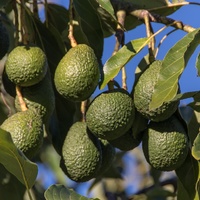
.5854.thumb.jpg)
